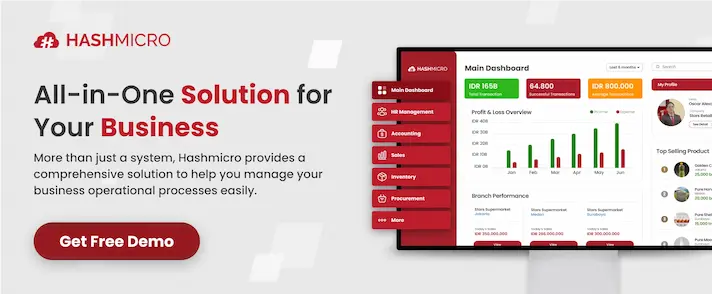Measuring and optimizing warehouse operations is crucial for success in the fast-paced and competitive logistics and warehousing sector. By tracking the right KPIs, warehouse managers can identify areas for improvement, enhance efficiency, improve customer satisfaction, and ensure safety and compliance.
In this comprehensive guide, we will explore the concept of warehouse KPIs and their importance in Singapore’s dynamic warehouse operations. We will also discuss various categories of KPIs relevant to managing and measuring warehouse performance.
This guide will provide valuable insights and strategies for optimizing warehouse operations, whether you are a warehouse manager, logistics professional, or business owner.
Introduction to Warehouse KPIs and Their Critical Role in Managing and Optimizing Warehouse Operations
Warehouse KPIs, or key performance indicators, are essential metrics used to measure and evaluate the performance of various aspects of warehouse operations. By tracking these KPIs, warehouse managers can gain valuable insights into how efficiently they receive, store, and fulfil orders, allowing them to identify areas for improvement.
In Singapore’s fast-paced logistics and warehousing sector, where competition is high, a comprehensive understanding of warehouse KPIs is crucial for staying ahead of the competition and delivering exceptional customer service.
Optimizing warehouse operations, including warehouse putaway, is a continuous process that requires attention to detail and data-driven decision-making. Warehouse KPIs are valuable tools in monitoring and managing warehouse performance, ensuring operations are running smoothly and efficiently.
To illustrate the importance of warehouse KPIs, let’s consider an example. One of the key KPIs for warehouse operations is the order fulfilment rate. This metric measures the percentage of customer orders successfully processed and shipped on time.
By tracking this KPI, warehouse managers can identify any bottlenecks or inefficiencies in the order fulfilment process and take proactive measures to improve it. This, in turn, leads to increased customer satisfaction and repeat business.
Another critical warehouse KPI is inventory accuracy, which measures the level of accuracy in inventory records. By closely monitoring inventory accuracy with the help of barcode tracking software, warehouse managers can identify discrepancies, reduce stockouts or overstocks, and ensure a smooth flow of goods throughout the supply chain. This not only optimizes warehouse operations but also improves overall supply chain management.

The image above emphasizes the importance of optimizing warehouse operations to maximize efficiency and productivity. Warehouse KPIs play a crucial role in achieving these goals and are essential for managing and improving warehouse performance.
In the next section, we will explore the relevance of warehouse KPIs to warehouse operations and discuss how they contribute to improving efficiency, customer satisfaction, and safety in warehouses.
Understanding Warehouse KPIs and Their Relevance to Warehouse Operations
In warehouse operations, measuring and monitoring key performance indicators (KPIs) is essential for optimizing efficiency, improving customer satisfaction, and ensuring safety.
KPIs are measurable values that provide insights into various aspects of warehouse performance metrics. They enable managers to identify areas for improvement and implement targeted strategies.
When it comes to warehouse operations, KPIs play a crucial role in several key areas: inventory management, receiving and putaway, order management, and safety and compliance.
By tracking and analyzing KPIs related to these areas, warehouse managers gain valuable insights into the efficiency of their operations, customer satisfaction levels, and adherence to safety protocols.
Improving efficiency is a top priority for warehouse managers, as it directly impacts productivity and cost-effectiveness. By tracking KPIs such as inventory turnover rate, order cycle time, and storage utilization, managers can identify bottlenecks and implement strategies to streamline processes, reduce waste, and optimize resource allocation.
In addition to improving efficiency, focusing on customer satisfaction is crucial for long-term success. Warehouse managers can track KPIs such as picking accuracy, fulfilment accuracy rate, and on-time shipping rate to ensure that orders are processed accurately and delivered on time. By continuously monitoring these KPIs, managers can identify areas for improvement, reduce errors, and enhance the overall customer experience.
Safety is another critical aspect of warehouse operations. By tracking KPIs such as accident/incident rate, near-miss incidents, and compliance with safety regulations, managers can actively promote a safe working environment, minimize risks, and ensure the well-being of employees and the security of the warehouse.
To illustrate the importance of warehouse KPIs, consider the following scenario: a warehouse manager reviews the KPIs related to order cycle time and identifies a consistent delay in order processing.
By analyzing the KPI data, the manager realizes that inefficient picking processes cause the delay. With this insight, the manager can implement targeted training programs, optimize workflow, and improve overall order processing efficiency.
Overall, warehouse KPIs are powerful tools that enable managers to measure, monitor, and improve warehouse performance. By tracking and analyzing these KPIs, managers can identify areas for improvement, implement targeted strategies, and drive continuous improvement in their operations.

Inventory Management KPIs: Explanation and Impact on Operations
Inventory management is a critical aspect of warehouse operations in Singapore. By effectively managing inventory, you can optimize warehouse efficiency, reduce costs, and improve overall operational performance. Tracking and analyzing inventory management key performance indicators (KPIs) is essential in achieving these goals.
Key inventory management KPIs include:
- Inventory turnover rate: Measures how quickly inventory is sold and replenished, indicating the efficiency of inventory management.
- Inventory accuracy: Determines the accuracy of inventory records, helping to minimize discrepancies and ensure reliable stock information.
- Shrinkage rate: Reflects the percentage of loss due to theft, damage, or administrative errors, assisting in identifying areas for improvement and reducing losses.
- Stock cover in days: Evaluate the number of days inventory is expected to last, aiding in maintaining optimal stock levels and avoiding stockouts.
By closely monitoring and analyzing these inventory management KPIs, warehouse managers can proactively address inefficiencies, improve processes, and drive operational excellence.
Streamlined inventory management processes, reduced shrinkage, and enhanced efficiency contribute to a more productive warehouse environment, increased customer satisfaction, and improved overall business performance.
Receiving and Putaway KPIs: Ensuring Efficiency in the Supply Chain
The efficient receiving and putaway of goods are vital to maintaining a smooth and efficient supply chain. To optimize these crucial processes, warehouse managers rely on receiving and putting away key performance indicators (KPIs) that measure the speed, accuracy, and effectiveness of these operations.
Some of the key KPIs in this category include:
1. Receiving Efficiency
This KPI measures the speed at which goods are received and checked into the warehouse. It provides insights into the efficiency of the receiving process, allowing managers to identify any delays or bottlenecks that may impact overall supply chain efficiency.
By tracking this KPI, warehouse managers can make informed decisions to streamline receiving processes and ensure faster inventory availability.
2. Putaway Efficiency
The putaway efficiency KPI measures how quickly and accurately goods are put away into the appropriate locations within the warehouse. By tracking this KPI, warehouse managers can identify any inefficiencies or errors in the putaway process and take corrective actions to optimize workflows. Improving putaway efficiency not only enhances supply chain efficiency but also increases accuracy in locating and retrieving stored items.
3. Storage (Warehouse Filling)
This KPI focuses on the utilization of warehouse space and measures how effectively the available storage capacity is utilized. By monitoring this KPI, warehouse managers can identify areas where storage space is overused or underused, and optimize inventory placement to maximize the use of storage capacity. Optimizing warehouse filling enhances operational efficiency and ensures efficient space utilization.
4. Workforce Usage
This KPI measures the utilization of labor resources during the receiving and putaway processes. It provides insights into how effectively the workforce is utilized and helps warehouse managers identify any inefficiencies or imbalances in labor allocation. By tracking this KPI, managers can optimize workforce usage, balance workload, and improve overall operational efficiency.
By tracking and analyzing these receiving and putaway KPIs, warehouse managers can gain valuable insights into the efficiency of their supply chain operations. Armed with this data, they can identify areas for improvement, optimize workflows, and enhance supply chain efficiency to meet the demands of Singapore’s dynamic logistics landscape.
To visualize the impact of receiving and away KPIs on supply chain efficiency, refer to the image below:
Order Management KPIs: Delivering Customer Satisfaction
Effective order management is crucial for delivering exceptional customer satisfaction in your warehouse operations. By tracking and analyzing key order management KPIs, you can ensure accuracy, efficiency, and on-time delivery, resulting in happy and loyal customers.
Picking accuracy is a critical KPI that measures the precision of your order fulfillment process. It ensures that the right products are selected and packed correctly, reducing errors and minimizing the need for returns or exchanges.
By continuously monitoring picking accuracy, you can identify any areas for improvement and implement strategies to enhance the accuracy of your order-picking operations.
Order cycle time is another vital KPI that measures the time it takes to process an order from start to finish. By optimizing your order cycle time, you can improve overall operational efficiency, reduce lead times, and enhance customer satisfaction.
Streamlining your order management processes, such as order verification, picking, packing, and shipping, can help you meet customer expectations and deliver orders promptly.
Additionally, the on-time shipping rate is a crucial KPI that measures the percentage of orders shipped within the promised timeframe. Meeting delivery deadlines is essential for building trust with your customers and ensuring repeat business.
By monitoring and striving to improve your on-time shipping rate, you can provide a reliable and consistent delivery experience that exceeds customer expectations.
Conclusion
In the logistics and warehousing sector, the ability to measure and optimize operations is essential for staying competitive. Tracking key performance indicators (KPIs) allows warehouse managers to identify inefficiencies, improve processes, and enhance customer satisfaction.
By focusing on critical areas such as inventory management, receiving and putaway, and order management, warehouses can streamline operations, reduce costs, and ensure safety compliance.
For businesses aiming to stay ahead in Singapore’s dynamic market, leveraging a robust warehouse management system from HashMicro can further enhance operational efficiency.
This system offers advanced tools to monitor KPIs, enabling data-driven decisions that lead to improved warehouse performance and customer satisfaction. Whether you’re managing inventory, optimizing workflows, or ensuring timely deliveries, implementing a comprehensive warehouse management system is key to achieving long-term success in the logistics industry.
Warning: Undefined array key "med" in /home/hashmicr/public_html/blog/wp-content/plugins/insert-headers-and-footers/includes/class-wpcode-snippet-execute.php(419) : eval()'d code on line 281


































